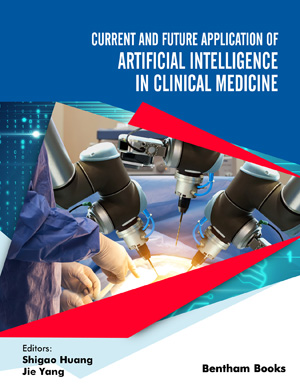[1]
Budoff MJ, Dowe D, Jollis JG, et al. Diagnostic performance of 64-multidetector row coronary computed tomographic angiography for evaluation of coronary artery stenosis in individuals without known coronary artery disease: results from the prospective multicenter ACCURACY (Assessment by Coronary Computed Tomographic Angiography of Individuals Undergoing Invasive Coronary Angiography) trial. J Am Coll Cardiol 2008; 52(21): 1724-32.
[2]
Meijboom WB, Meijs MF, Schuijf JD, et al. Diagnostic accuracy of 64-slice computed tomography coronary angiography: A prospective, multicenter, multivendor study. J Am Coll Cardiol 2008; 52(25): 2135-44.
[3]
Shaw LJ, Marwick TH, Zoghbi WA, et al. Why all the focus on cardiac imaging? JACC Cardiovasc Imaging 2010; 3(7): 789-94.
[4]
Montalescot G, Sechtem U, Achenbach S, et al. 2013 ESC guidelines on the management of stable coronary artery disease: the task force on the management of stable coronary artery disease of the European Society of Cardiology. Eur Heart J 2013; 34(38): 2949-3003.
[5]
Yoon YE, Wann S. Evaluation of acute chest pain in the emergency department “triple rule-out” computed tomography angiography. Cardiol Rev 2011; 19: 115-21.
[6]
Marton-Popovici M, Merkely B, Szilveszter B, Drobni ZD, Maurovich-Horvath P. Computed tomographic angiography for risk stratification in patients with acute chest pain – the triple rule-out concept in the emergency department. Curr Med Imaging 2017. Available from:
https://www.eurekaselect.com/node/162723/article
[7]
Liddy S, Oslizlok P, Walsh KP. Comparison of the results of transcatheter closure of patent ductus arteriosus with newer Amplatzer devices. Catheter Cardiovasc Interv 2013; 82(2): 253-9.
[8]
Tzikas A, Shakir S, Gafoor S, et al. Left atrial appendage occlusion for stroke prevention in atrial fibrillation: multicenter experience with the Amplatzer Cardiac Plug. EuroIntervention 2016; 11: 1170-9.
[9]
Cinteza E, Nicolescu AM, Filip C, et al. Interventional treatment of cardiac emergencies in children with congenital heart diseases. J Cardiovasc Emergencies 2019; 5: 7-17.
[10]
Goitein O, Fink N, Guetta V, et al. Printed MDCT 3D models for prediction of Left Atrial Appendage (LAA) occluder device size: a feasibility study. EuroIntervention 2017; 13(9): e1076-9.
[11]
Rat N, Muntean I, Opincariu D, Fagarasan A, Toganel R, Chitu M. Cardiovascular imaging for guiding interventional therapy in structural heart diseases. Curr Med Imaging Rev 2017. Availabe from:
https://www.eurekaselect.com/node/163008/article
[12]
Bourantas CV, Tenekecioglu E, Radu M, Räber L, Serruys PW. State of the art: Role of intravascular imaging in the evolution of percutaneous coronary intervention - a 30-year review. EuroIntervention 2017; 13(6): 644-53.
[13]
Stefanini GG, Byrne RA, Windecker S, Kastrati A. State of the art: coronary artery stents - past, present and future. EuroIntervention 2017; 13(6): 706-16.
[14]
Serruys PW, Chevalier B, Sotomi Y. Comparison of an everolimus-eluting bioresorbable scaffold with an everolimus-eluting metallicstent for the treatment of coronary artery stenosis (ABSORB II): a 3 year, randomised, controlled, single-blind, multicentre clinical trial. Lancet 2016; 388(10059): 2479-91.
[15]
Sotomi Y, Suwannasom P, Serruys PW, Onuma Y. Possible mechanical causes of scaffold thrombosis: insights from case reports with intracoronary imaging. EuroIntervention 2017; 12(14): 1747-56.
[16]
Katagiri Y, Stone G, Onuma Y, Serruys P. State of the art: the inception, advent and future of fully bioresorbable scaffolds. EuroIntervention 2017; 13(6): 734-50.
[17]
Ferent I, Mester A, Hlinomaz O, et al. Intracoronary imaging for assessment of vascular healing and stent follow-up in bioresorbable vascular scaffolds. Curr Med Imaging 2017. Available from:
http://www.currentmedicalimagingreviews.com/articles
[18]
Iwasawa J, Koruth JS, Petru J, et al. Temperature-controlled radiofrequency ablation for pulmonary vein isolation in patients with atrial fibrillation. J Am Coll Cardiol 2017; 70(5): 542-53.
[19]
Valinoti M, Fabbri C, Turco D, Mantovan R, Pasini A, Corsi C. 3D patient-specific models for left atrium characterization to support ablation in atrial fibrillation patients. Magn Reson Imaging 2017; 45: 51-7.
[20]
Akoum N, Daccarett M, McGann C, et al. Atrial fibrosis helps select the appropriate patient and strategy in catheter ablation of atrial fibrillation: a DE-MRI guided approach. J Cardiovasc Electrophysiol 2011; 22(1): 16-22.
[21]
Kiss Zs, Hendriks A, Muka T, Bramer WM, Kovacs I, Szili-Torok T. The role of atrial fibrosis detected by delayed-enhancement MRI in atrial fibrillation ablation. Curr Med Imaging 2017. Available from:
http://www.eurekaselect.com/node/164370/article












